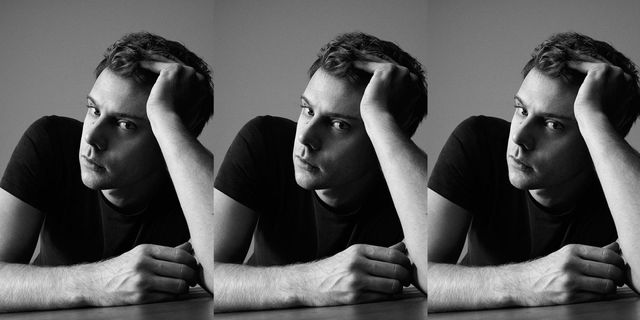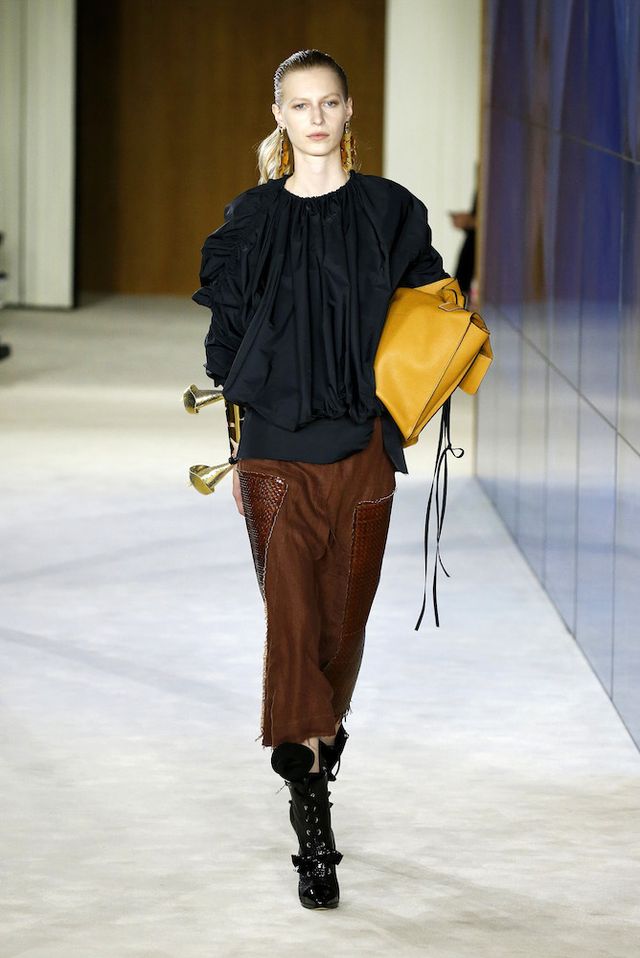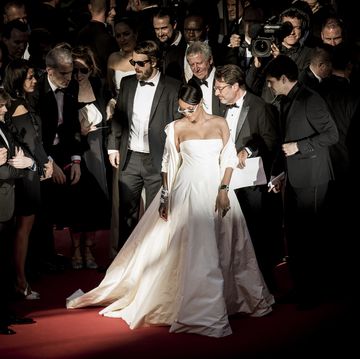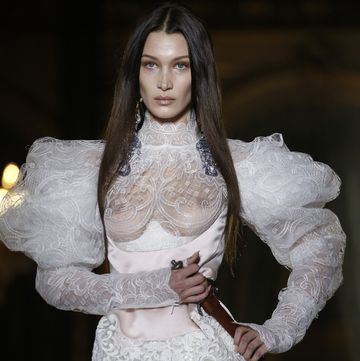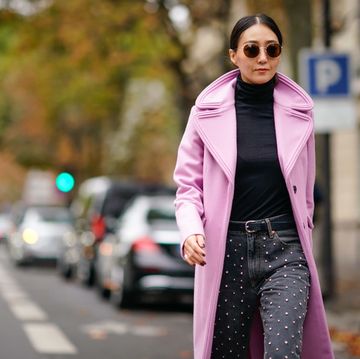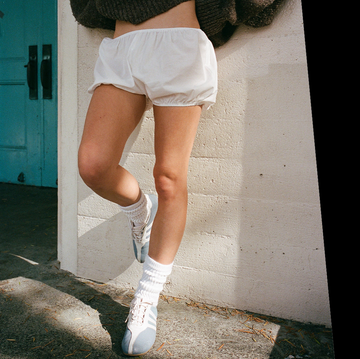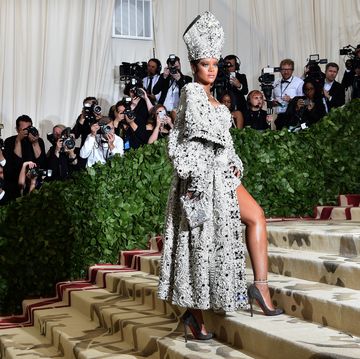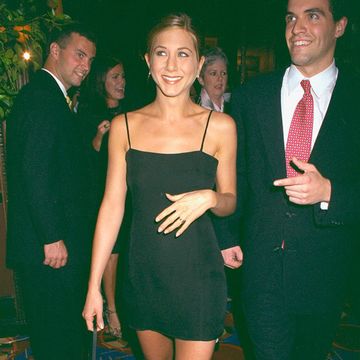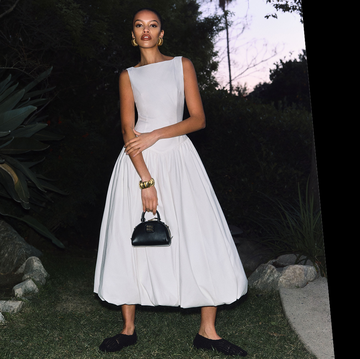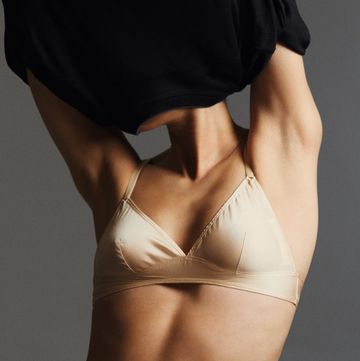'For me, doing an interview with someone is like having therapy,' Jonathan Anderson tells me. 'When I go to an interview, I'm trying to work out contextually what the hell is going on.'
Jonathan, 31, and I have been chatting for an hour. But instead of lying on a leather Chesterfield sofa, we're seated across from one another in a showroom, surrounded by rails of shoes and bags. If I were a therapist, I'd probably make note of the following behaviour: he talks 20 miles per minute, seems to have a not-so-latent thing for pop music (Justin Bieber gets seven mentions and Rihanna four) and has a higher-than-average desire to make sense of things. I find him to be likeable – a guy you'd want to have a drink with. And yet, I sense that if we were competitors, it might be a different story.
We've met to discuss his first fragrance launch, a chic pair of Loewe perfumes called 001. It's an important milestone for any designer. But in this moment, we've gone off on a tangent about the crazy times we're living in and specifically, how Jonathan – the first person to win a Designer of the Year British Fashion Award in both the Menswear and Womenswear categories in a single year (2015) – has managed to flourish in them.
While some designers appear to resent fashion's increasingly big asks, Jonathan thrives on them. And against a backdrop of the most far-reaching cultural, political, economic and industry changes we've seen in generations, he seems to be doing just fine.
So fine, in fact, that fashion publications regularly describe his career rise as 'meteoric', as he's grown his part-LVMH-owned label, J.W.Anderson, to a company that makes an estimated £5m and pushed the LVMH-owned Loewe, where he is three years into a creative director role, to generate a predicted £302m, according to the trade newspaper Women's Wear Daily. Armed with three phones, Anderson is juggling his roles at the helm of a 170-year-old heritage house and an agenda-setting namesake label with an impressive amount of focus.
To hear Jonathan explain it, it's in his hardwiring to operate smoothly in nerve-racking times. 'I grew up during one of Northern Ireland's most complex periods.
'I remember going to school where you would pass through a checkpoint. That was normal. So when people look at the news and they go, "Oh my god, what's happening in that country? Look, there's military on the street," – I grew up with that.'
So to understand the overachieving Jonathan of now – the man with a growing fan base of celebrities (Alexa Chung, Solange Knowles, Kim Kardashian), internet influencers (Susanna Lau AKA Susie Bubble and Yasmin Sewell) and industry bigwigs (former boss Donatella Versace and Delphine Arnault who tapped him for Loewe) – I think it's best to go back to the beginning.
Let's imagine a little flaxen-haired, pre-teen Jonathan – dressed in tiger-print velour cargo pants. 'I was obviously quite a confused kid,' he jokes. Long before he kick-started fashion's age of the gender fluid, he grew up in a small village called The Loup, shopping for discounted designer gems in T.K. Maxx.
'I would go with my mother and buy things that were on sale – stuff that was either too small or just too outrageous. For me it was like a gold mine.' One of three siblings, he convinced his dad, Willie, a star rugby player, and mum, Heather, a former English teacher, to remove the shelves from his wardrobe so he could work with the rails instead. 'I would visually merchandise all these clothes in my wardrobe.'
His instinct to run counter to the status quo started early. 'My parents were extremely liberal. They didn't believe in being Catholic or Protestant, and that was a big deal at the time,' he explains. That contrarian spirit, and penchant for curation, has carried over well into adulthood.
'The minute you see that everything is going one way, you get the hell out,' he says. It's an interesting thought coming from the guy who has given other men permission to wear feminine things, a trend so pervasive in fashion it's now a menswear norm.
When Jonathan showed men in frills and lace three years ago, he was hardly the first. And yet his view looked intelligent and transgressive, mostly because fashion become quite safe. Tabloids made fun of it, while critics were divided, with some praising his bold statement and others making pointed comparisons to Gaultier's work.
Regardless, it placed the London College of Fashion alumnus on a watch list of exciting, emerging names in British fashion, alongside Mary Katrantzou and Erdem. Now, nearly everyone is gender blending. 'I do believe what we did in J.W.Anderson was different from what Gaultier had done. We had guys in lace pyjamas with headscarves and the reviews for that show were horrendous, which was fine,' he says.
'We could have changed direction but we stuck with it because I felt like we were on a creative path. I still believe in this idea that fashion has to be able to look culturally at where you are and then be a stepping stone to work out where to go. As a creative you're trying to find out what's missing and I think sometimes we forget that. That's the whole point.'
Lately, though, Jonathan seems more intrigued by the divisions between the sexes. His most recent Loewe womenswear collection is replete with sensual, swingy dresses and skirts, brass breastplates and pussycat pendant necklaces. The show unfolded against a hypnotherapy soundtrack – a woman cooing, 'Focus on your breathing.'
'I've become obsessed with this idea, which is so bipolar to me, of sex and glamour. The last Loewe collection was erotic and empowering. We had everything from a choker to the shoe, which was incredibly Helmut Newton. And I have never looked to Newton as a reference. But when I look at fashion now… I can just sense the women around me are going to a new place which is like, "Yes we can wear the flat, but when we want to take control we will do something else." And that's why I'm very proud of the last show, because for me, that was a change.'
The fashion website SHOWStudio called the collection, 'The beginning of a new age for Anderson,' which is a point that his two new fragrances drive home. 'It's called 001 because it's a new beginning,' a Loewe PR woman tells me before I sit down with Jonathan, who later clarifies: 'It's not the beginning, but the 1% of a new beginning for me and a new start for Loewe in fragrance. I thought it should be a unisex perfume. But when I started the process, I thought, "This isn't how it should be. Let's split the notes."'
The perfumes are two variations on a theme: a rich blend of tangerine, bergamot and sandalwood, with undertones of cedar and musk for one and jasmine and vanilla for the other. They smell rich and carnal, sweet and fleshy. 'It's about the sexual allure of borrowing something, no matter if it's a man to a man, or a woman to a woman, or a man to a woman.' Jonathan's first goal when he started at Loewe three years ago was to turn it into a 'cultural brand'. 'I wanted to take the veneer off. Old brands collect a lot of dust. You know, the logo collects dust, the bag, the whole thing.'
In Jonathan's world, the pieces are as central to the culture as their curation. This is most evident in his progressive retail spaces, from his complete overhaul of more than 150 Loewe stores to his J.W.Anderson Workshops space in east London, which is equal parts art happening and boutique. Loewe doesn't release sales figures but Jonathan's approach is successful. Clothing sales have reportedly increased 380% since his joining, says fashion blog Fashionista.
'We're heading into a decade where we're all curators, where the sofa in our home is as important as the clothing we wear. Why? Because we can take a picture of it. I'm part of a generation where it is impossible to just think about fashion because culture doesn't work that way. If you can't be 360°, then forget about it.'
Deep down, he's still the kid merchandising product in his wardrobe, but he's a savvy marketer as well. 'We live in a culture where if you are a creative director, you are essentially dealing with a consumer who is already bored.'
Does he get exhausted trying to create the next new thing? 'In fashion you have a moment – it can be two years or 20 – but there will always be a generational move when you realise you're not relevant anymore, and that's fine.' But for now, he's got a collection to create and a launch to promote; our 'session' is over and he's on to the next moment.
